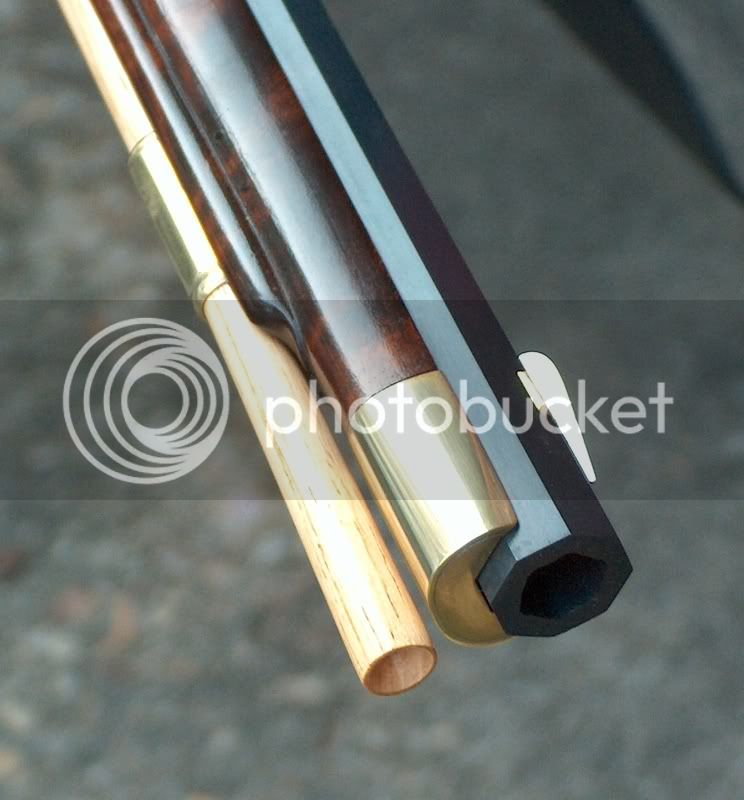Here is some documentation that came up during a similar discussion on the Historic Trekking board. I make not analysis, just offer it up for your information.
Date: 01-27-06 08:28
How d' ye!
I will go first with a heresy...
That could be a long discussion, but in brief and to over generalize...
Advertisements in period newspapers from gunshops and gunsmiths first start listing browning as offered services in the 1780's.
Ad from the PENNSYLVANIA GAZETTE, May 2, 1781:
"Perkin and Coutty at the corner of Second and Spruce Streets, Philadelphia, beg leave to acquaint their Friends, and the Public in general that they carry on the Gun and Pistol making in all its branches, where gentlemen may be supplied with Guns and Pistols of the neatest and best quality, on the shortest notice and most reasonable terms. They also blue and brown Gun Barrels in the neatest manner..."
From AN ESSAY ON SHOOTING, published in London in 1789:
"The last operation [in making the barrel] is that of colouring the barrel,...Formerly, the barrels were coloured by exposing them to a degree of heat which produced an elegant blue tinge, but as this effect arises from a degree of calcination. [oxidation] taking place upon the surface of the metal, the inside of the barrel always suffered by undergoing the same change. This, therefore, added to the painful sensation excited in the eye by looking along a barrel so coloured, has caused the practice of bluing to be disused for some time past. Instead of it barrels are now browned, as it is termed..."
For "charcoal bluing:"
An ad from the VIRGINIA GAZETTE, August 8, 1751:
"David and William Geddy Smiths of Williamsburg, near the Church, having all Manner of Utensils requisite, carry on the Gunsmith's, Cutler's, and Founder's Trade, at whose Shop may be had the following Work, viz. Gun work, such as Guns and Pistol Stocks, plain or neatly varnished. Locks and Mountings, Barrels blued, bored, and rifled;..."
The process is well described in the P.N. Sprengel's 1771 HANDWERKE UND-KUNSTE IN TABELLEN:
"For further beautification, the barrel is treated to allow it to oxidize to a blue color,...The gunmaker can rub the barrel down with a sweet-oil cloth so the ash which he dusts through a linen cloth adheres to the barrel; he then lays the barrel onto glowing coals until it begins to turn blue. The best way to blue the barrel is, after polishing, to insert a glowing mandrel, which the tradesman calls a piston into the bore, and to rub the barrel with bloodstone as soon as it -begins to turn blue due to the heat of the piston."
French trade guns were sometimes specified as blue, and Hudson Bay did not specify brown until 1780.
The US Government went with bright arms until the M1816/22 Type II which was browned, but when the "Type III" came out a decade or so later they went back to bright which lasted up until the M1873 Trapdoor Springfield (except for the Model 1841 and Model 1855 Rifles [first type only] which had browned barrels).
Of course, having a barrel charcoal-blued was an added expense to be be considered and paid by a customer with the cheaper choice being left natural.
"Natural" iron barrels tend to "brown" on their own over time depending upon their use, exposure, and care. If left alone, over time, a steel (iron) barel or lock, etc., will take on a brown patina because it oxidizes. Some lads like the browned look, as it can give a gun a "used over time look"' (However, usually the finish and condition of the stock wood is much too "new" for the gun to have age/time/used brown...).
IMHO, much of our Hobby's on-going love of browned barrels and locks comes from looking at surviving originals with decades of brown patina having taken over their once blued, or natural metal, and for locks color-case hardened finishes and thinking they started out "browned." ;-)
Again, being very brief and over-generalizing.
Others' mileage may vary...






